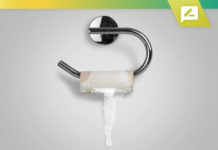Type 2 diabetes is a chronic condition affecting millions worldwide. Proper management allows individuals to lead healthy, fulfilling lives despite the diagnosis. This article delves into the most effective strategies for managing type 2 diabetes, including dietary modifications, exercise, lifestyle changes, and glucose monitoring.
Disease management often requires a multifaceted approach, encompassing various lifestyle and medical treatment aspects. Understanding how to integrate these strategies into daily routines can significantly improve outcomes for those with diabetes.
The Importance of Hydration
Staying hydrated is critical for managing blood sugar levels. Drinking adequate water helps glucose move through the bloodstream, reducing the risk of hyperglycemia. Ensuring enough fluid intake can be particularly beneficial for those with diabetes, as dehydration can increase blood sugar levels.
To maintain proper hydration, follow these tips:
- Drink Water Before Meals: Consuming water before or during meals can help increase daily water intake.
- Carry a Reusable Water Bottle: Having a water bottle handy is a constant reminder to drink more water.
- Eat Water-Rich Foods: Foods like celery, tomatoes, and melons provide additional fluids.
- Set Reminders: Utilize smartphone apps or alarms to prompt regular water consumption.
- Add Flavor to Water: Infuse water with fruits like lemon or cucumber for a refreshing taste.
You can read more on NDTV Health for additional information on how hydration impacts blood sugar levels and tips on increasing water intake.
Dietary Modifications
Diet plays a pivotal role in diabetes management. The goal is to maintain stable blood sugar levels by eating a balanced diet that includes a variety of nutrients. Here are key dietary strategies:
Focus on Whole Foods
Whole foods, such as fruits, vegetables, whole grains, lean proteins, and healthy fats, should form the basis of your diet. These foods have a lower glycemic index, meaning they cause slower, more stable rises in blood sugar compared to processed foods.
Monitor Carbohydrate Intake
Carbohydrates have the most significant impact on blood sugar levels. Monitoring and moderating carbohydrate intake can help manage glucose levels. Choose complex carbs like whole grains, legumes, and starchy vegetables over simple carbs found in sugary snacks and beverages.
Balanced Meals
Ensuring each meal is balanced with a mix of carbohydrates, proteins, and fats slows the absorption of sugar into the blood. This balance helps maintain more consistent glucose levels throughout the day.
Fiber-Rich Foods
Dietary fiber, found in fruits, vegetables, and whole grains, can slow down digestion and absorption of sugar, aid in weight management, and reduce the risk of heart disease, which is especially important for individuals with diabetes.
Healthy Fats
Incorporate healthy fats from olive oil, avocados, nuts, and seeds. These fats can improve cholesterol levels, reduce inflammation, and provide a sense of fullness that can prevent overeating.
Exercise and Physical Activity
Regular physical activity is another cornerstone of managing type 2 diabetes. Exercise helps improve insulin sensitivity, enabling cells to use the available insulin more effectively to absorb glucose. It also aids in weight management, reduces cardiovascular risks, and boosts overall well-being.
Types of Exercise
Engage in a mix of aerobic exercises, strength training, and flexibility exercises:
- Aerobic Exercise: Walking, cycling, and swimming improve cardiovascular health and help lower blood sugar levels.
- Strength Training: Building muscle mass through resistance exercises like weightlifting can enhance insulin sensitivity.
- Flexibility Exercises: Activities such as yoga and stretching improve joint mobility and reduce the risk of injury.
Creating an Exercise Routine
Start with realistic goals and gradually increase the intensity and duration of workouts. Aim for at least 150 minutes of moderate-intensity aerobic exercise weekly, supplemented with two strength training sessions.
Staying Active Throughout the Day
Beyond regular exercise sessions, incorporate more movement into daily routines. Take the stairs instead of the elevator, walk or bike for short trips, and stand or walk during phone calls.
For more detailed guidance on how physical activity affects diabetes and tips to incorporate exercise into your routine, you can explore Everyday Health's recommendations.
Medication Management
For many individuals, lifestyle changes alone may not be enough to manage type 2 diabetes. Medications, including insulin and oral drugs, are essential in controlling blood sugar levels. Here’s a look at the types of medications commonly prescribed:
Oral Medications
- Metformin: Often the first-line medication, metformin helps decrease glucose production in the liver and improves insulin sensitivity.
- Sulfonylureas: These stimulate the pancreas to release more insulin.
- DPP-4 Inhibitors: These medications help reduce blood sugar levels without causing hypoglycemia.
- SGLT2 Inhibitors: They help the kidneys remove glucose from the bloodstream through urine.
Insulin Therapy
For some, insulin injections are necessary to regulate blood sugar levels. Different types of insulin work at various speeds and durations, tailored to individual needs.
Combination Therapy
Sometimes, different medications are combined to achieve optimal blood sugar control.
Monitoring and Adjusting Medications
Regular monitoring of blood sugar levels helps healthcare providers adjust medications to ensure effectiveness. Use a continuous glucose monitor (CGM) or perform regular finger-stick tests to keep track of blood glucose levels.
Visit Mayo Clinic's comprehensive guide for more information on how specific medications work and the latest updates on diabetes treatments.
Monitoring Blood Sugar Levels
Consistent monitoring of blood sugar levels is crucial for effective diabetes management. It helps determine how well lifestyle changes and medications work and informs necessary adjustments.
Methods of Monitoring
- Finger-Stick Blood Tests: Using a glucometer to test blood samples can give immediate results.
- Continuous Glucose Monitors (CGMs): These devices provide real-time glucose readings and trends, offering more profound insights into glucose patterns.
Target Blood Sugar Levels
Work with a healthcare provider to establish target blood sugar levels. Generally, the goal is to maintain glucose within a range that prevents hyperglycemia and hypoglycemia.
Keeping a Log
Recording blood sugar readings and notes on diet, exercise, and medications helps identify patterns and factors affecting glucose levels. Many apps are available to assist with tracking and can provide reminders for testing.
The Impact of Sleep
Quality sleep is often overlooked in diabetes management but plays a significant role in regulating blood sugar levels. Poor sleep can lead to insulin resistance, increased appetite, and higher stress levels, all of which can worsen diabetes control.
Tips for Better Sleep
- Maintain a Regular Sleep Schedule: Go to bed and wake up simultaneously daily.
- Create a Restful Environment: Ensure your sleeping space is dark, quiet, and calm.
- Limit Screen Time Before Bed: Avoid electronic devices at least an hour before bedtime.
- Manage Stress: Practice relaxation techniques like deep breathing, meditation, or gentle yoga before bed.
Explore the resources available at Everyday Health for more insights on how sleep affects diabetes and tips on improving sleep quality.
Stress Management
Stress can significantly impact blood sugar levels. During stress, the body releases hormones like cortisol and adrenaline, which can increase blood sugar levels.
Stress Reduction Techniques
- Exercise Regularly: Physical activity helps reduce stress hormones and improves mood.
- Mindfulness and Meditation: Mindfulness meditation can reduce stress and improve overall well-being.
- Hobbies and Leisure Activities: Engaging in enjoyable activities can relieve stress.
- Seek Support: Talking to friends, family, or a mental health professional can help manage stress more effectively.
Travel Considerations
Traveling can disrupt routines and challenge diabetes management. Changes in time zones, diet, and activity levels need careful planning to maintain stable blood sugar levels.
Preparation Tips
- Plan Meals: Pack healthy snacks and plan meals around travel schedules.
- Monitor Blood Sugar: Check levels more frequently to catch any irregularities early.
- Medication Management: Carry medications and supplies in your carry-on luggage, and make sure to have more than you need in case of travel delays.
For more tips on managing diabetes while traveling, read Everyday Health's guide.
The Role of Resilience and Support
Managing diabetes can be challenging, and building resilience is crucial for long-term success. Resilience involves adapting to changes, returning from setbacks, and maintaining a positive outlook.
Building Resilience
- Education: Understanding diabetes and its management empowers individuals to take control of their health.
- Support Networks: Engage with support groups, family, and friends. Sharing experiences and advice can provide emotional support and practical tips.
- Professional Guidance: Regular consultations with healthcare providers ensure that management plans are effective and up-to-date.
- Self-Care: Prioritize activities that enhance well-being, such as hobbies, exercise, and relaxation techniques.
Explore additional resources on Everyday Health to learn more about resilience and its importance in diabetes management.
Innovative Treatments and Research
Ongoing research continually brings new insights and treatments for diabetes management. Innovations in technology and medicine offer promising advances that could make managing diabetes more effective and less burdensome.
Technological Advances
- Insulin Pumps: Advanced insulin pumps offer precise delivery and mimic natural insulin release better.
- Artificial Pancreas: These systems combine CGMs and insulin pumps to automate blood sugar control.
- Mobile Health Apps: Apps for tracking blood sugar, diet, and exercise provide valuable data and support.
New Medications
Research into new drug classes and combinations continues to yield potential treatments that offer better blood sugar control with fewer side effects.
For the latest updates on diabetes treatments and research, visit Mayo Clinic.
Conclusion
Managing type 2 diabetes effectively requires a comprehensive approach that includes proper hydration, dietary modifications, regular exercise, medication management, consistent monitoring, quality sleep, stress reduction, and resilience building. By integrating these strategies into daily life, individuals with diabetes can achieve better blood sugar control, reduce the risk of complications, and improve their overall quality of life.
Embracing a proactive and informed approach to diabetes management empowers individuals to take control of their health and well-being. The resources and tips in this article can serve as a foundation for developing a personalized diabetes management plan tailored to individual needs and lifestyles.
The links offered valuable additional information and support for those looking to delve deeper into specific strategies. By staying informed and engaged in their care, individuals with type 2 diabetes can look forward to a healthier and more fulfilling life.













![Bowflex Max Total: 2024 Fitness Workout Exercise Machine [Review] Bowflex Max Total: 2020 Equipment Review For Complete Upper and Lower Body Workout](https://www.advancedliving.com/wp-content/uploads/2019/12/Bowflex-Max-Total-218x150.jpg)


